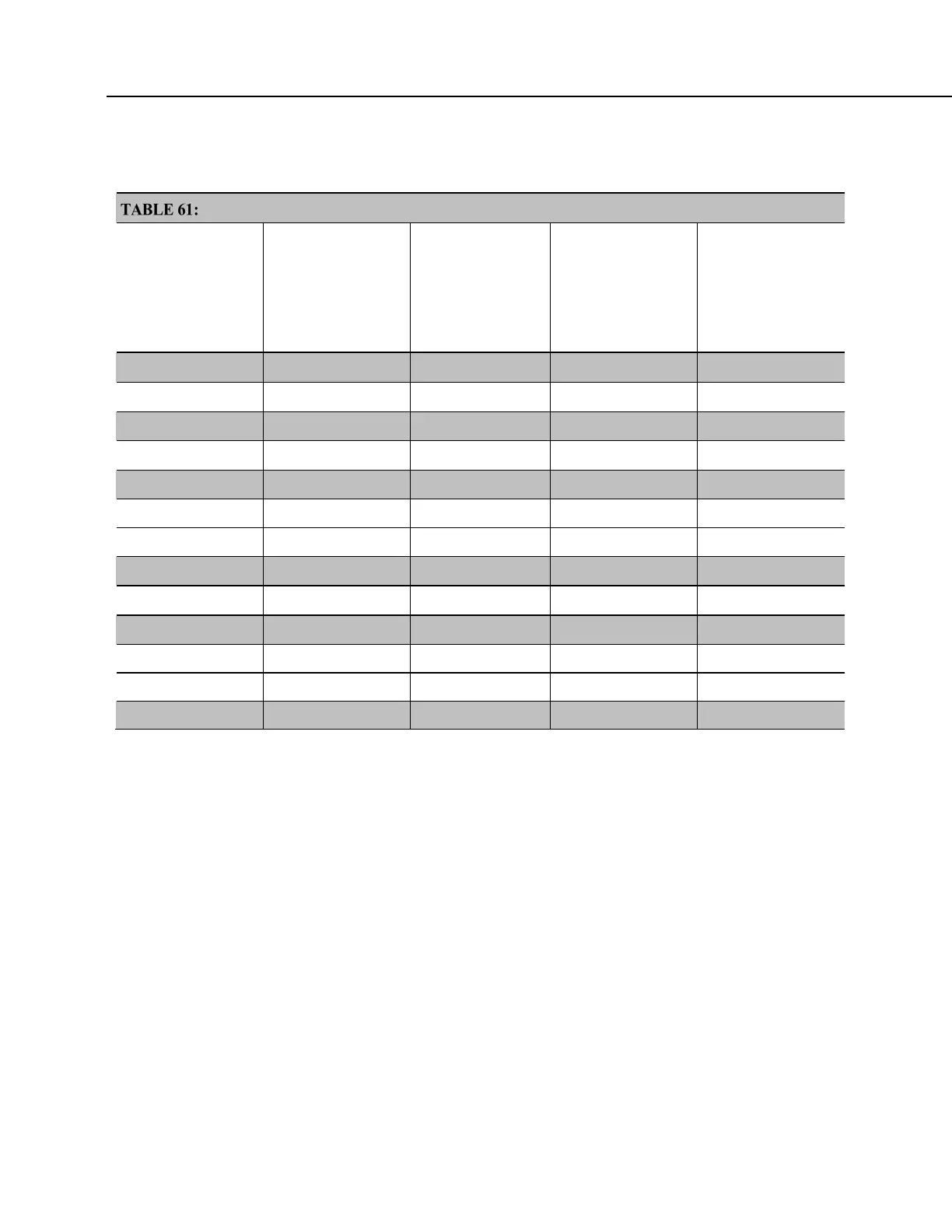Section 8. Operation
TABLE: Offset Voltage Compensation Options (p. 326) lists some of the tools
available to minimize the effects of offset voltages.
Offset Voltage Compensation Options
CRBasic
Measurement
Instruction
Input Reversal
(RevDiff =True)
Excitation
Reversal
(RevEx = True)
Measure
Offset During
Measurement
(MeasOff = True)
Measure Offset
During
Background
Calibration
(RevDiff = False)
(RevEx = False)
(MeasOff = False)
AM25T()
BrHalf()
BrHalf3W()
BrHalf4W()
BrFull()
BrFull6W()
TCDiff()
TCSe()
Therm107()
Therm108()
Therm109()
VoltDiff()
VoltSe()
Input and Excitation Reversal
Reversing inputs (differential measurements) or reversing polarity of excitation
voltage (bridge measurements) cancels stray voltage offsets. For example, if 3
µV offset exists in the measurement circuitry, a 5 mV signal is measured as 5.003
mV. When the input or excitation is reversed, the second sub-measurement is –
4.997 mV. Subtracting the second sub-measurement from the first and then
dividing by 2 cancels the offset:
5.003 mV – (–4.997 mV) = 10.000 mV
10.000 mV / 2 = 5.000 mV
When the CR800 reverses differential inputs or excitation polarity, it delays the
same settling time after the reversal as it does before the first sub-measurement.
So, there are two delays per measurement when either RevDiff or RevEx is used.
If both RevDiff and RevEx are True, four sub-measurements are performed;
positive and negative excitations with the inputs one way and positive and
negative excitations with the inputs reversed. The automatic procedure then is as
follows,

